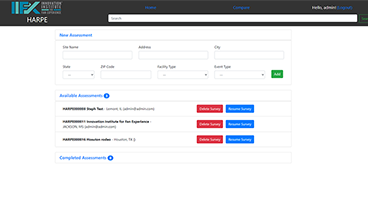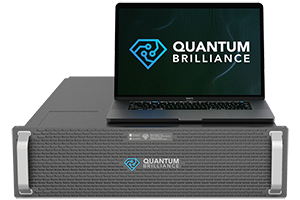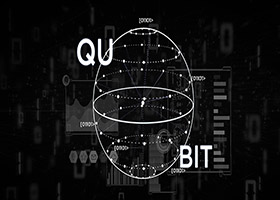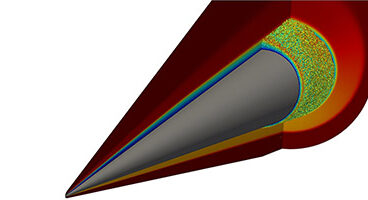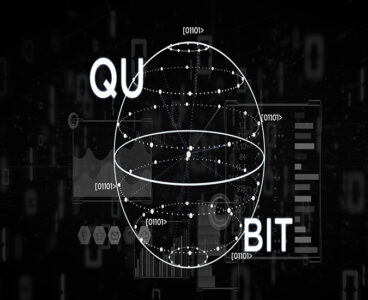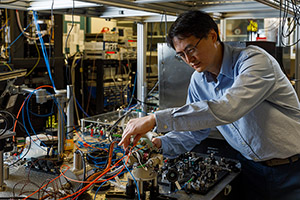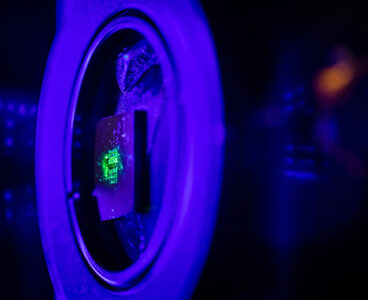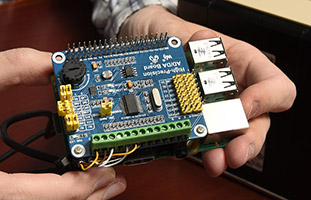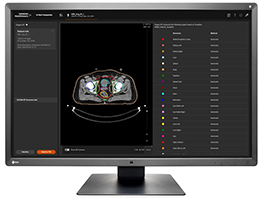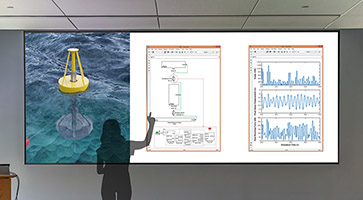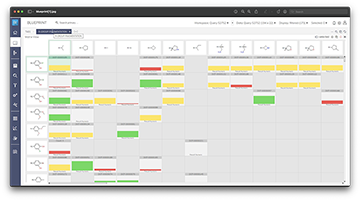HARPE, from Argonne National Laboratory, examines physical security, cybersecurity, and public health so leaders can focus on the most impactful areas related to safety and security. It evaluates the evolving threats posed by a pandemic while maintaining a strong focus on traditional physical security and cybersecurity at venues and events. HARPE is an online assessment…
Accelerating biologics R&D with unified software and data flows
By Christian Olsen Associate VP, Industry Principal, Biologics at Dotmatics Biologics are changing the way we treat disease, affecting where companies invest, and, most importantly, impacting patients’ lives. Last year, nearly half of the 37 new drugs approved by the U.S. Center for Drug Evaluation and Research (CDER) were biologics, while its partner agency the…
R&D 100 winner of the day: Hydra I/O: A system for highly resilient inter-chip communications
Many scientific and commercial systems require many constituent Application-Specific Integrated Circuits (ASICs), but practical considerations require that these ASICs be addressed through a small number of external connections. Current approaches to this challenge are not resilient against failures of their constituent ASICs. If the DUNE Near Detector were to use a non-resilient technology to connect…
Qristal software suite enables using miniature quantum computers in real-world applications
Quantum Brilliance, a developer of room-temperature miniaturized quantum computing products and solutions, announces the launch of its Qristal software suite, enabling R&D teams to integrate quantum systems in real-world applications in a critical step towards the practical utility of the technology. With Qristal, developers and researchers can now develop and test novel quantum algorithms specifically…
Q-CTRL unites AI and quantum technology to boost progress with world-first software
Q-CTRL, a developer of useful quantum technologies through quantum infrastructure software, has announced groundbreaking new AI capabilities in its Boulder Opal software, promising to serve as a “rocket booster” for the emerging industry. The convergence of quantum technology and AI promises a technological revolution on par with the advent of electricity. Despite intense theoretical interest,…
Metaspectral wins funding from Canadian Space Agency to develop greenhouse gas monitoring method
Metaspectral, a software company, has received funding as part of the smartEarth Canadian Space Agency initiative to build a method to systematically and methodically quantify the carbon dioxide (CO2) levels present at ground-elevation using hyperspectral data. Metaspectral has created a hybrid on-premise and cloud-based software platform that is used in a variety of industries to…
Using the power of symmetry for new quantum technologies
By taking advantage of nature’s own inherent symmetry, researchers at Chalmers University of Technology in Sweden have found a way to control and communicate with the dark state of atoms. This finding opens another door towards building quantum computing networks and quantum sensors to detect the elusive dark matter in the universe. “Nature likes symmetries…
‘Quantum Calculator’ demonstrates quantum computers’ ability to solve optimization problems
Multiverse Computing, a value-based quantum computing solutions company, has released new research that illustrates how today’s quantum computers can be used to do complex mathematical calculations using a new algorithm. The algorithm created by Multiverse is designed to turn a quantum computer into a mathematical tool that can run complex calculations used by scientists daily,…
Sandia, Intel seek novel memory tech to support stockpile mission
From Sandia National Laboratory In pursuit of novel advanced memory technologies that would accelerate simulation and computing applications in support of the nation’s stockpile stewardship mission, Sandia National Laboratories, in partnership with Los Alamos and Lawrence Livermore national labs, has announced a research and development contract awarded to Intel Federal LLC, a wholly owned subsidiary…
Digital transformation: Creating the pathways to bring scientists closer to the truth
By Laércio Fernandes, Product Marketing Manager, Thermo Fisher Scientific Hypothesize, test, and repeat. For centuries, the fundamentals of the scientific method have helped researchers stride toward greater understanding, and these principles are just as sound today. In recent years, leaps in technological innovation have brought us faster analysis and a greater depth of understanding — two…
PASQAL and Univ. of Chicago unite on neutral atoms quantum computing research
PASQAL, a neutral atoms quantum computing research company headquartered in Paris, announces a collaboration agreement with Professor Hannes Bernien at the University of Chicago. The collaboration aims to advance neutral atom quantum computing. PASQAL and Bernien will accomplish this by developing new techniques for enabling high-fidelity qubit control. Bernien is a professor of molecular engineering at…
Software companies partner to improve quantum algorithm development
Q-CTRL, a quantum control infrastructure software company, and Classiq, a maker of quantum algorithm development software, announce a partnership to provide an end-to-end platform for designing, executing, and analyzing quantum algorithms. The new partnership will integrate Classiq’s Quantum Algorithm Design platform with Q-CTRL’s advanced quantum control techniques designed to boost hardware performance. The collaboration combines the sector’s…
At Sandia Labs, a vision for navigating when GPS goes dark
From Sandia National Laboratory Words like “tough” or “rugged” are rarely associated with a quantum inertial sensor. The remarkable scientific instrument can measure motion a thousand times more accurately than the devices that help navigate today’s missiles, aircraft, and drones. But its delicate, table-sized array of components that includes a complex laser and vacuum system…
Ultrathin device could replace a roomful of equipment
From Sandia National Laboratory: An ultrathin invention could make future computing, sensing and encryption technologies remarkably smaller and more powerful by helping scientists control a strange but useful phenomenon of quantum mechanics, according to new research recently published in the journal Science. Scientists at Sandia National Laboratories and the Max Planck Institute for the Science…
Massachusetts governor awards $3.5M R&D grant for new Northeastern University quantum facility
On Wednesday, September 7, the Baker-Polito Administration visited Northeastern University’s Innovation Campus in Burlington for the announcement of a new $3.5 million grant for the Experiential Quantum Advancement Laboratories (EQUAL), a nearly $10 million project to advance the emerging quantum sensing and related technology sectors in the state. The Northeastern-led project will establish new partnerships…
Finland and Singapore’s National Quantum Office ink MoU to strengthen quantum technology research cooperation
The National Quantum Office of Singapore, VTT Technical Research Centre of Finland, IQM Quantum Computers and CSC – IT Center for Science (Finland) agree to explore and promote research and development collaboration in the areas of quantum technologies. Under the MoU, the parties aim to accelerate the development of quantum technology hardware components, algorithms and…
R&D 100 2021 winner of the day: Shadow Figment
Shadow Figment, developed by Pacific Northwest National Laboratory, software defends critical infrastructure and operational systems against devastating cyberattacks using interactive decoys mapped to real devices. Decoys convince attackers they’re making progress by sending real-time, plausible operational signals. With the attacker safely preoccupied, Shadow Figment alerts defenders and gathers information to respond appropriately — without affecting…
Tech companies team up to detect defects in manufacturing with quantum computing
Multiverse Computing, a quantum computing solution company, and IKERLAN, a technology transfer company, have released the results of a joint research study that detected defects in manufactured car pieces via image classification by quantum artificial vision systems. The research team developed a quantum-enhanced kernel method for classification on universal gate-based quantum computers as well as…
R&D 100 winner of the day: Plug-N-Play Appliance for Resilient Response of Operational Technologies (PARROT)
The Plug-N-Play Appliance for Resilient Response of Operational Technologies (PARROT), developed by Idaho National Laboratory, provides an extra layer of security from cyberattacks on critical infrastructure operations. When placed between control systems and infrastructure, PARROT isolates a cyberattack, provides a manual or automated response, and prevents harmful impacts while maintaining operations. Most critical infrastructure in…
Q-CTRL introduces quantum sensing division to meet market demands
Q-CTRL, a developer of useful quantum technologies through quantum control infrastructure software, introduces its quantum sensing division, which has become one of the largest in the world. The team will showcase its capabilities publicly for the first time at the Army Quantum Technology Challenge (QTC) in Adelaide on August 10 and 11. Q-CTRL is delivering…
SwRI develops automated shuttle for campus tours, research
From Southwest Research Institute Southwest Research Institute, a developer of software and systems integration for automated vehicles and robotics, has deployed an automated shuttle at its 1,500-acre campus. Capable of ferrying up to 14 passengers, the shuttle features algorithms, sensors, cameras and software that SwRI developed through internal research. “It is rewarding for our engineers…
Multiverse Computing announces quantum digital twin initiative with Bosch Group
Quantum computing company Multiverse Computing announces a collaboration in a research project with the Bosch Automotive Electronics plant in Madrid to use the power of quantum computing in the virtual replica or “digital twin” of a factory. Multiverse is implementing quantum-based optimization algorithms at Bosch, delivering cutting-edge electronics components to several OEMs around the world.…
R&D 100 winner of the day: AI-Rad Companion Organs RT
Siemens Healthineers’ AI-Rad Companion Organs RT is a comprehensive intelligent software that performs automatic segmentation of organs-at-risk at the level of consensus-based contours on computed tomography images for radiation therapy planning in cancer patients. Many of the most commonly cancer-impacted organs such as the prostate, lungs, colon, rectum and breasts are supported with automated contouring.…
R&D 100 winner of the day: WEC-Sim
Wave Energy Converter Simulator (WEC-Sim), from National Renewable Energy Laboratory and Sandia National Laboratories, is the first open-source code allowing developers to simulate WEC dynamics and performance, which lowers costs and reduces R&D cycle time in this pivotal and growing field. Wave energy can transform the way we power homes and businesses, lending resilience to…
Software platform helps researchers accelerate life-improving therapies
Dotmatics, a maker of R&D scientific software that connects science, data and decision-making, announces the release of its Small Molecule Drug Discovery Solution, an integrated scientific R&D platform with pre-configured workflows and expanded data management capabilities. The solution helps companies innovate more easily and expedites time to deployment by leveraging best practices derived from the…

